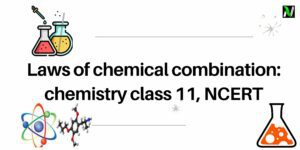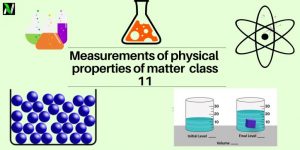Stoichiometry is a fundamental concept in chemistry that deals with the quantitative relationships between reactants and products in chemical reactions. It is an essential tool for predicting the amount of products that can be obtained from a given amount of reactants, and for optimizing reaction conditions to get the desired results.

Stoichiometric calculations, in particular, involve applying mathematical formulas to determine the ratios of reactants and products in a chemical reaction and the amounts of each substance involved. Whether you are a chemistry student, a researcher, or simply curious about the world around you, understanding stoichiometry and stoichiometric calculations is crucial for gaining insight into the chemical processes that govern our lives. So, let’s delve into this fascinating topic and explore various mathematical formulas used in stoichiometric calculations.
What is stoichiometry class 11?
Stoichiometry is a branch of chemistry that deals with the quantitative relationship between the reactants and products in a chemical reaction. It is concerned with the calculation of the amounts of reactants and products involved in a chemical reaction, based on the balanced chemical equation.
Stoichiometry is based on the law of conservation of mass, which states that in a chemical reaction, the total mass of the reactants must be equal to the total mass of the products. By using stoichiometric calculations, chemists can predict the amounts of products that will be formed from a given amount of reactants, or the amount of reactants required to produce a desired amount of products.
Stoichiometric calculations involve converting the amounts of reactants and products between different units of measurement, such as moles, grams, or liters. These calculations also include using mole ratios derived from the balanced chemical equation to determine the amounts of reactants and products involved in a chemical reaction. Before we start understanding Stoichiometry, let’s discuss what information we can obtain from a balanced chemical equation.
Read Also
- Percentage composition chemistry class 11: formula, definition, examples, NCERT
- Mole concept class 11 | definition, formula & solved examples, NCERT
- Uncertainty in measurement chemistry, class 11 NCERT
- Empirical formula & molecular formula: chemistry class 11
What are stoichiometry calculations?
Stoichiometric calculations are calculations that involve the use of stoichiometry to determine the quantitative relationships between the amounts of reactants and products in a chemical reaction. Stoichiometry is the study of the quantitative relationships between reactants and products in a chemical reaction, based on the law of conservation of mass.
Stoichiometric calculations involve the use of balanced chemical equations to determine the amount of one reactant or product that is needed or produced in a chemical reaction, given the amount of another reactant or product. For example, given the balanced chemical equation:
$$2H_2 + O2 \rightarrow 2H_2 O$$
We can determine the amount of oxygen gas (O2) that is needed to produce a certain amount of water (H2O), or the amount of hydrogen gas (H2) that is needed to react completely with a certain amount of oxygen gas (O2).
Stoichiometric calculations can also be used to determine the theoretical yield and percent yield of a reaction, which are important parameters in the production and purification of chemicals. The theoretical yield is the maximum amount of product that can be obtained from a given amount of reactants, based on the stoichiometry of the reaction. The percent yield is the actual yield of the product obtained in a reaction, expressed as a percentage of the theoretical yield.
Stoichiometric calculations are essential in many areas of chemistry, including analytical chemistry, biochemistry, environmental chemistry, and materials science. They are used in the design and optimization of chemical processes, the synthesis of new compounds, and the analysis of chemical reactions and materials.
What information, we can obtain from a balanced chemical equation?
Let us consider the combustion of methane. A balanced equation for this reaction is given below:
$$
\mathrm{CH}_4(\mathrm{~g})+2 \mathrm{O}_2(\mathrm{~g}) \rightarrow \mathrm{CO}_2(\mathrm{~g})+2 \mathrm{H}_2 \mathrm{O}(\mathrm{g})
$$
Here, methane and dioxygen are called reactants, and carbon dioxide and water are called products. Note that all the reactants and the products are gases in the above reaction and this has been indicated by the letter (g) in the brackets next to its formula. Similarly, in the case of solids and liquids, (s) and (l) are written respectively.
The coefficients 2 for $\mathrm{O}_2$ and $\mathrm{H}_2 \mathrm{O}$ are called stoichiometric coefficients. Similarly the coefficient for $\mathrm{CH}_4$ and $\mathrm{CO}_2$ is one in each case. They represent the number of molecules (and moles as well) taking part in the reaction or forming in the reaction.
Stoichiometric coefficient: Stoichiometric coefficient or stoichiometric number is the number of molecules that participate in the reaction.
Thus, according to the above chemical reaction, what information we can obtain:
- One mole of $\mathrm{CH}_4(\mathrm{~g})$ reacts with two moles of $\mathrm{O}_2$ (g) to give one mole of $\mathrm{CO}_2(\mathrm{~g})$ and two moles of $\mathrm{H}_2 \mathrm{O}(\mathrm{g})$
- One molecule of $\mathrm{CH}_4$ (g) reacts with 2 molecules of $\mathrm{O}_2(\mathrm{~g})$ to give one molecule of $\mathrm{CO}_2(\mathrm{~g})$ and 2 molecules of $\mathrm{H}_2 \mathrm{O}(\mathrm{g})$
- $22.7 \mathrm{~L}$ of $\mathrm{CH}_4(\mathrm{~g})$ reacts with $45.4 \mathrm{~L}$ of $_2(\mathrm{~g})$
- $16 \mathrm{~g}$ of $\mathrm{CH}_4(\mathrm{~g})$ reacts with $2 \times 32 \mathrm{~g}$ of $\mathrm{O}_2$ (g) to give $44 \mathrm{~g}$ of $\mathrm{CO}_2(\mathrm{~g})$ and $2 \times 18$ g of $\mathrm{H}_2 \mathrm{O}(\mathrm{g})$.
From these relationships, the given data can be interconverted as follows:
\begin{aligned}\text{mass} \leftrightharpoons moles & \leftrightharpoons \text{no. of molecules}\\ \frac{\text { Mass }}{\text { Volume }}&= \text{Density}\end{aligned} - The conservation of mass: The balanced equation confirms that the total mass of the reactants is equal to the total mass of the products. This is because the number of atoms of each element is conserved in the reaction.
This information is crucial for understanding and predicting the behavior of chemical reactions in various contexts, such as in industry, environmental chemistry, and biological systems.
How to balance a chemical equation?
According to the law of conservation of mass, a balanced chemical equation has the same
number of atoms of each element on both sides of the equation. Many chemical equations can
be balanced by trial and error.
Balancing a chemical equation is the process of adjusting the coefficients of the reactants and products to ensure that the number of atoms of each element is equal on both sides of the equation. Here are the steps to balance the chemical equation $Fe + HCl \rightarrow FeCl_3 + H_2$:
Step 1: Write the unbalanced equation.
$$Fe + HCl \rightarrow FeCl_3 + H_2$$
Step 2: Count the number of atoms of each element on both sides of the equation.
| Fe: 1 on the left, 1 on the right H: 1 on the left, 2 on the right Cl: 1 on the left, 3 on the right |
Step 3: Balance the number of Fe atoms by putting a coefficient of 2 in front of Fe on both sides.
$$2Fe + HCl \rightarrow 2FeCl_3 + H_2$$
Step 4: Balance the number of Cl atoms by putting a coefficient of 6 in front of HCl on the left side.
$$2Fe + 6HCl \rightarrow 2FeCl_3 + H_2$$
Step 5: Balance the number of H atoms by putting a coefficient of 3 in front of H2 on the right side.
$$2Fe + 6HCl \rightarrow 2FeCl_3 + 3H_2$$
Step 6: Check if the equation is balanced.
| Fe: 2 on the left, 2 on the right H: 6 on the left, 6 on the right Cl: 6 on the left, 6 on the right |
The equation is now balanced, and the coefficients indicate the relative number of moles of each reactant and product in the reaction. Therefore, the balanced equation for the reaction $Fe + HCl \rightarrow FeCl_3 + H_2$ is:
$$2Fe + 6HCl \rightarrow 2FeCl_3 + 3H_2$$
We can balance any chemical equation as long as the formulas for the reactants and products are correct. It’s important to remember that we cannot change the subscripts in these formulas to balance the equation.
Read Also
- Atomic mass and molecular mass: chemistry class 11, NCERT
- John dalton’s atomic theory: postulates & limitations, class 11, NCERT
- Laws of chemical combination: chemistry class 11, NCERT
- Matter | Nature of matter | classification of matter, class 11 | some basic concepts of chemistry
What is a Limiting Reagent?
In a chemical reaction, the limiting reagent is the reactant that is completely consumed first, which limits the amount of product that can be formed. The other reactant(s), which are present in excess, are not completely consumed and are left over after the reaction is complete.
To understand this concept, consider the following example reaction:
$$2H_2 + O_2 \rightarrow 2H_2 O$$
In this reaction, hydrogen gas (H2) and oxygen gas (O2) react to form water (H2O). Let’s say we have 4 moles of H2 and 2 moles of O2 available for the reaction. The balanced chemical equation tells us that the mole ratio of H2 to O2 is 2:1, which means that for every 2 moles of H2 used, 1 mole of O2 is required.
So, if we use all 4 moles of H2, we would need 2 moles of O2, which is available. However, if we only have 1 mole of O2 available, then it will be completely consumed after reacting with 2 moles of H2 to produce 2 moles of H2O. In this case, the limiting reagent is O2, since it is completely consumed first and limits the amount of H2O that can be formed.
Therefore, the amount of product formed in a chemical reaction is determined by the amount of limiting reagent available. Any excess of the other reactant(s) will not be used up and will be left over after the reaction is complete. It is important to identify the limiting reagent in a chemical reaction to determine the maximum amount of product that can be formed and to ensure that all the reactants are used efficiently.
Reactions in Solutions
Most chemical reactions in labs use solutions. So, it’s important to know how to measure the amount of a substance in a solution. You can measure the concentration of a solution or the amount of substance in a given volume of the solution can be expressed in any of the
following ways.
- Mass percent or weight percent (w/w %)
- Mole fraction
- Molarity
- Molality
Now, Let us now study each one of them in detail.
What is Mass percent?
Mass percent, also known as a mass fraction or weight percent, is a way of expressing the concentration of a solute in a solution or the composition of a mixture. It is defined as the mass of the solute (or component) divided by the total mass of the solution (or mixture) and multiplied by 100%.
The mass percent can be calculated using the following formula:
$$\text{mass percent} = \left(\frac{\text{mass of solute}}{\text{mass of solution}}\right) \times 100\%$$
For example, if we have 10 grams of salt (NaCl) dissolved in 90 grams of water (H2O), the mass percent of salt in the solution can be calculated as follows:
mass of solute = 10 g mass of solution = 10 g + 90 g = 100 g
| \begin{aligned}\text{mass percent of salt} &=\left(\frac{\text{mass of solute}}{\text{mass of solution}}\right) \times 100\%\\& = \left(\dfrac{10\ g}{100\ g}\right) \times 100\% = 10\%\end{aligned} |
Therefore, the mass percent of salt in the solution is 10%.
The mass percent is a useful way of expressing the concentration or composition of a substance, especially in chemistry and biology. It is commonly used in analytical chemistry to determine the purity of a substance or the concentration of a solution.
What is a Mole fraction?
Mole fraction, also known as the amount fraction, is a way of expressing the concentration of a component in a mixture. It is defined as the number of moles of one component (the solute) divided by the total number of moles in the mixture.
The mole fraction can be calculated using the following formula:
$$\text{mole fraction} = \frac{\text{moles of solute}}{\text{total moles in the mixture}}$$
For example, suppose we have a mixture of 2 moles of ethanol (C2H5OH) and 3 moles of water (H2O). The mole fraction of ethanol in the mixture can be calculated as follows:
moles of ethanol = 2 mol moles of water = 3 mol total moles in the mixture = 2 mol + 3 mol = 5 mol
mole fraction of ethanol = moles of ethanol / total moles in the mixture mole fraction of ethanol = 2 mol / 5 mol = 0.4
Therefore, the mole fraction of ethanol in the mixture is 0.4.
The mole fraction is a useful way of expressing the concentration of a component in a mixture, especially in chemistry and physics. It is commonly used in thermodynamics to calculate the partial pressure of a gas in a mixture or to determine the activity coefficients of solutions. The sum of the mole fractions of all the components in a mixture is always equal to 1, which means that the mole fraction of one component can be used to determine the mole fraction of the other components.
What is Molarirty?
Molarity is a measure of the concentration of a solute in a solution. It is defined as the number of moles of solute per liter of solution.
The molarity can be calculated using the following formula:
$$\text{Molarity} = \frac{\text{moles of solute}}{\text{liters of solution}}$$
For example, suppose we dissolve 2 moles of sodium chloride (NaCl) in 1 liter of water (H2O). The molarity of the solution can be calculated as follows:
moles of NaCl = 2 mol liters of solution = 1 L
molarity of NaCl = moles of NaCl / liters of solution molarity of NaCl = 2 mol / 1 L = 2 M
Therefore, the molarity of the sodium chloride solution is 2 M.
The molarity is a commonly used unit of concentration in chemistry, especially in analytical chemistry, where it is used to determine the amount of a solute in a solution or to prepare solutions of known concentrations. It is important to note that the molarity of a solution is temperature dependent since the volume of the solution can change with temperature due to thermal expansion.
What is Molality?
Molality is a measure of the concentration of a solute in a solution. It is defined as the number of moles of solute per kilogram of solvent.
The molality can be calculated using the following formula:
$$\text{molality} = \frac{\text{moles of solute}}{\text{kilograms of solvent}}$$
For example, suppose we dissolve 2 moles of sodium chloride (NaCl) in 1 kilogram of water (H2O). The molality of the solution can be calculated as follows:
moles of NaCl = 2 mol kilograms of water = 1 kg
molality of NaCl = moles of NaCl / kilograms of solvent molality of NaCl = 2 mol / 1 kg = 2 mol/kg
Therefore, the molality of the sodium chloride solution is 2 mol/kg.
Molality is a useful unit of concentration, especially in physical chemistry and thermodynamics, where it is used to calculate the colligative properties of solutions, such as boiling point elevation, freezing point depression, and osmotic pressure. Unlike molarity, molality does not depend on the temperature or pressure of the solution, since it is defined in terms of the mass of the solvent, which is not affected by changes in temperature or pressure.
Read Also
- Laws of chemical combination: chemistry class 11, NCERT
- Atomic mass and molecular mass: chemistry class 11, NCERT
- Measurement of physical properties of matter class 11 NCERT chemistry
- Physical and chemical properties of matter chemistry class 11
Stoichiometric calculations solved examples
| Example. 1 Calculate the amount of water (g) produced by the combustion of $16 \mathrm{~g}$ of methane. Solution: The balanced equation for the combustion of methane is : $$ \mathrm{CH}_4(\mathrm{~g})+2 \mathrm{O}_2(\mathrm{~g}) \rightarrow \mathrm{CO}_2(\mathrm{~g})+2 \mathrm{H}_2 \mathrm{O}(\mathrm{g}) $$ (i) $16 \mathrm{~g}$ of $\mathrm{CH}_4$ corresponds to one mole. (ii) From the above equation, $1 \mathrm{~mol}$ of $\mathrm{CH}_4$ (g) gives $2 \mathrm{~mol}$ of $\mathrm{H}_2 \mathrm{O}$ (g). $2 \mathrm{~mol}$ of water $\left(\mathrm{H}_2 \mathrm{O}\right)=2 \times(2+16)$ $=2 \times 18=36 \mathrm{~g}$ $1 \mathrm{~mol}\ \mathrm{H}_2 \mathrm{O}=18 \mathrm{~g} \mathrm{H}_2 \mathrm{O} \Rightarrow \frac{18 \mathrm{~g} \mathrm{H}_2 \mathrm{O}}{1 \mathrm{~mol} \mathrm{H}_2 \mathrm{O}}=1$ Hence, $2 \mathrm{~mol} \mathrm{H}_2 \mathrm{O} \times \frac{18 \mathrm{~g} \mathrm{H}_2 \mathrm{O}}{1 \mathrm{~mol} \mathrm{H}_2 \mathrm{O}}$ $$ =2 \times 18 \mathrm{~g} \mathrm{H}_2 \mathrm{O}=36 \mathrm{~g} \mathrm{H}_2 \mathrm{O}$$ |
| Example. 2 How many moles of methane are required to produce $22 \mathrm{~g} \mathrm{CO}2(\mathrm{~g})$ after combustion? Solution: According to the chemical equation, $$ \mathrm{CH}_4(\mathrm{~g})+2 \mathrm{O}_2(\mathrm{~g}) \rightarrow \mathrm{CO}_2(\mathrm{~g})+2 \mathrm{H}_2 \mathrm{O}(\mathrm{g}) $$ $44 \mathrm{~g} \mathrm{CO}_2(\mathrm{~g})$ is obtained from $16 \mathrm{~g} \mathrm{CH}_4(\mathrm{~g})$. $\left[\therefore 1 \mathrm{~mol} \mathrm{CO}_2(\mathrm{~g})\right.$ is obtained from $1 \mathrm{~mol}$ of $\left.\mathrm{CH}_4(g)\right]$ Number of moles of $\mathrm{CO}_2(\mathrm{~g})$ $$ \begin{aligned} & =22 \mathrm{~g} \mathrm{CO}_2(\mathrm{~g}) \times \frac{1 \mathrm{molCO}_2(\mathrm{~g})}{44 \mathrm{gCO}_2(\mathrm{~g})} \\ & =0.5 \mathrm{~mol} \mathrm{CO}_2(\mathrm{~g}) \end{aligned} $$ Hence, $0.5 \mathrm{~mol} \mathrm{CO}_2(\mathrm{~g})$ would be obtained from $0.5 \mathrm{~mol} \mathrm{CH}_4$ (g) or 0.5 $\mathrm{mol}$ of $\mathrm{CH}_4(\mathrm{~g})$ would be required to produce $22 \mathrm{~g}{\mathrm{CO}_2}(\mathrm{~g})$. |
| Example. 3 A solution is prepared by adding $2 \mathrm{~g}$ of a substance A to $18 \mathrm{~g}$ of water. Calculate the mass percent of the solute. Solution: \begin{aligned} & \text { Mass per cent of } A=\frac{\text { Mass of } A}{\text { Mass of solution }} \times 100 \\ & =\frac{2 \mathrm{~g}}{2 \mathrm{~g} \text { of } \mathrm{A}+18 \text { g of water }} \times 100 \\ & =\frac{2 \mathrm{~g}}{20 \mathrm{~g}} \times 100 \\ & =10 \% \end{aligned} |
| Example. 4 Calculate the molarity of $\mathrm{NaOH}$ in the solution prepared by dissolving its $4 \mathrm{~g}$ in enough water to form $250 \mathrm{~mL}$ of the solution. Solution: Since, \begin{aligned} \text{molarity (M)}& =\frac{\text { No. of moles of solute }}{\text { Volume of solution in litres }} \\ & =\frac{\text { Mass of } \mathrm{NaOH} / \text { Molar mass of } \mathrm{NaOH}}{0.250 \mathrm{~L}} \\ & =\frac{4 \mathrm{~g} / 40 \mathrm{~g}}{0.250 \mathrm{~L}}=\frac{0.1 \mathrm{~mol}}{0.250 \mathrm{~L}} \\ & =0.4 \mathrm{~mol}^{-1} \\ & =0.4 \mathrm{M} \end{aligned} Note that the molarity of a solution depends upon temperature because the volume of a solution is temperature dependent. |








